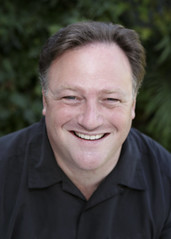The Enneagram (Part 2 - Complexities)

So now that we have the basic concepts of the Enneagram down, I'd like to explore some of the details of the system. As we'll see, there is much more to the Enneagram than reducing people to 9 simple types.
Firstly, let's explore the diagram itself. You'll notice that the nine types can be split into three triads: 5-6-7 on the left, 2-3-4 on the right, and 8-9-1 on top. Of course, this is by design. The three types on the left side are "Head" types, primarily following their intellects. The right side types form the "Heart" triad, where emotion rules. And the top three are the "Gut" or instinctual types. Furthermore, as I saw pointed out in Searle's book, each of the three triads contains one type for each of Freudian psychoanalyst Karen Horney's three "neurotic solutions" -- moving against people (aggressive), away from people (withdrawn), or toward people (compliant or dependent).
The next most important thing to realize about Enneagram types is the ways that different people of the same basic type might differ from each other. The area that offers the greatest ability for diversity is in a person's level of personal growth or development. Anyone can be psychologically healthy or unhealthy, and different people will fall anywhere along the continuum between these extremes. For our purposes, the more a person leans towards the unhealthy side of his personality, the more he will be ruled by his ego, become more defensive, and repeat negative cycles. The converse is true on the healthy side of the scale.
For example, a One (The Reformer) most wants to be good and perfect, conversely fearing corruption. When most healthy, she will be wise and trusting that the Truth will out. Moving down the scale towards the less psychologically healthy, she might:
- display an intense sense of personal morality
- complain about the status quo
- grow more pedantic and preachy
- relentlessly criticize others, and/or self
- become highly opinionated
- doubt others' abilities to see what is "right"
- obsess over other people's flaws while hypocritically doing the same thing herself
- become severely depressed or obsessive-compulsive
Thus, as you see, we might encounter two seemingly different people who in fact are both Ones. Of course, the same is true for any of the other eight types as well.
Another area in which two people of the same basic type may differ is in what is known as a "Wing." Since the nine types are plotted on a circle, each is adjacent to two other types. These two other types are known as the "Wings" of the type. Most people will favor one of their two Wings, but some people are so heavily ruled by one of their wings that they are seen as embodying a sort of cross between the two types. Thus, since the One is adjacent to the Nine and the Two, a One might actually be a One with a Nine-Wing (sometimes written 1w9), or a One with a Two-Wing (1w2). It should be noted that there is some debate as to whether or not the Four and Five can act as Wings to each other, since they may be spaced too far apart to actually affect each other.
The last kind of distinction I'm going to discuss here is a type's stress and security points. You'll notice on the diagram above that the nine types are not only joined by lines. In fact, this diagram shows directional arrows connecting the different points. The idea here is that every type is connected to two of the other types, and when a person is in stress, they move towards one of these two types. Conversely, when a person is secure, they will take on some of the characteristics of the other type. Since the arrow cycle can go in either direction (whether in the direction of stress or security), the typical diagram simply connects the types with straight lines, not arrows. In the diagram above, the arrows move in the direction of security. Thus, if a One feels secure, he will act more like a Seven (while still maintaining his basic One characteristics). As he grows more stressed, however, he will begin to act more and more like a Four.
Clearly, the stress and security points offer many possibilities for screenwriters, as you may use them to delineate a character's story arc. The same may be said of the levels of health. They may affect a character's development through a film, or might simply offer distinctive starting points based on the role the character is to serve in the story.
Regardless, as this intro indicates, there is a lot more depth to the Enneagram system than a mere 9 personality types that everyone must match up to. In the next (and perhaps final) part of this series I'll explore ways to use the Enneagram to develop well-rounded and realistically believable characters.




0 Comments:
Post a Comment
<< Home